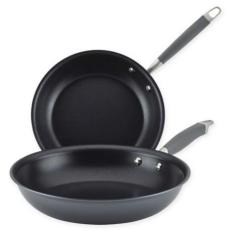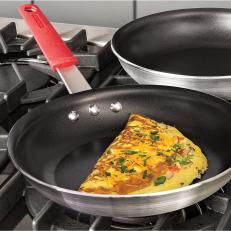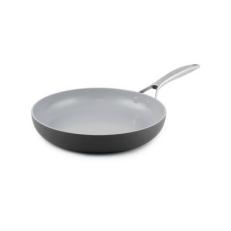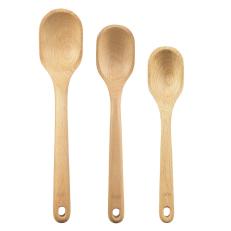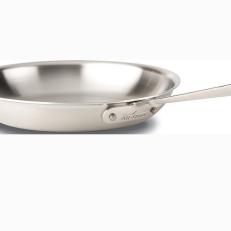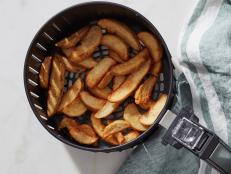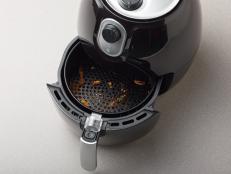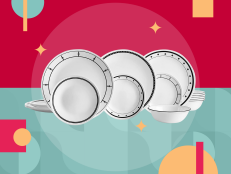When to Use Nonstick and Stainless Steel Pans in the Kitchen
For anyone who cooks regularly, owning both nonstick and stainless steel pans is essential for recipe success.
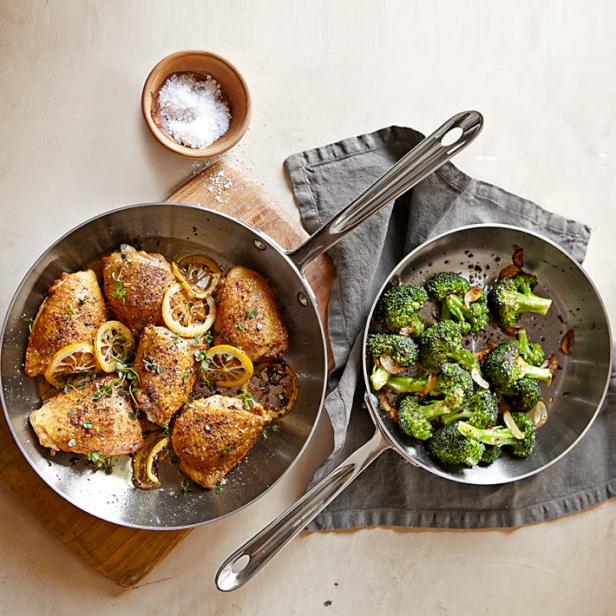
By Larisa Alvarez for Food Network Kitchen
When you purchase cookware, whether you're stocking your kitchen for the first time or buying something for a specific dish, the goal is efficiency and longevity. You need to purchase the right equipment for the right job and make the concerted effort to use tools the way they are meant to be used. With all this in mind, when buying pans, should you buy nonstick pans or stainless steel pans? If you’re someone who cooks regularly, the short answer is you need both. Nonsticks cover kitchen bases that stainless steel pans can’t, and vice versa.
What To Know About Nonstick Pans
At their core, nonstick pans are generally made of aluminum, and then coated with a nonstick material (either PFOA-free Teflon or ceramic). A light, weightless pan may seem ideal, but when choosing any pot or pan you want something with a thicker, heavier bottom that will evenly distribute heat. As for the bells and whistles, ideally the nonstick is ovenproof and it has an oven-friendly, coated handle. It’s not a must have, but it comes in handy when you want to make baked egg dishes like frittatas. If you do get an oven-safe pan, you’ll want to check how much heat the pan can take (most are oven-safe up to 400 degrees F). Going above that number can cause damage the pan and the food that’s being cooked.
Our Top Nonstick Pan Picks, Tested by Food Network Kitchen
When To Use Nonstick Pans
Now that you know how to shop for a nonstick, let’s discuss how you’ll use them and take care of them. For starters, for the reasons discussed above, less heat is the name of the game. Nonstick pans are able to do what they do because of their nonstick coating, and the nonstick coating suffers from excessive heat. Stick to more delicate foods like eggs, crepes, pancakes, and very delicate fish that can be cooked on medium and low heat. Never sear in a nonstick pan. Searing requires high heat, and you cannot use high heat with a nonstick pan. Additionally, you want to steer clear of acidic food (think tomato sauces or wines) and nonstick cooking sprays. The acid wears away the coating, and the nonstick sprays build up a residue that is hard to remove. Use oil or butter instead of nonstick spray. Next, life rules that bear repeating: Use wood, silicone or rubber utensils on nonstick pans. And do not put nonstick pots or pans in the dishwasher — they can't handle dishwasher heat, even if the labels tells you that they can. The combination of heat and water is terrible for metals, and in this case, will destroy your coating.
Nonstick-Safe Utensils
Finally, I think it’s important to remember that as much as we may try, it is a big ask to never go above a medium flame, or to always remember to use certain utensils, and avoid certain foods. Sometimes the nonstick is the only pan that is clean, sometimes all the rubber spatulas are in the dishwasher, and sometimes you forget that you can’t add a jar of tomato sauce. Even with our best efforts, the coating on these pans wears down. It is not a failure on anyone’s part, it is the reality. If the food starts to stick, you cannot stick with that nonstick. This pan has one quality that makes it worth your kitchen space. Once that quality is not in play, it needs to be replaced. Spare yourself the next couple of years (or decades) of scraping scrambled eggs off with a wooden spoon.
What To Know About Stainless Steel Pans
A stainless steel pan is your kitchen workhorse. Look for a multi-ply pan with an aluminum or copper core. Aluminum and copper are heat conductors and those materials are then coated in stainless steel to give the pans a nice, non-reactive finish. Like its non-stick sibling, you want a pan with a heavier bottom for maximum, even heat conduction. Thin, light pans are more likely to have hot spots and are easier to dent.
Our Top Stainless Steel Pan Picks, Tested by Food Network Kitchen
When to Use Stainless Steel Pans
You can cook practically everything in a stainless steel pan. They can be harder to clean, but if you use enough heat and enough fat, most foods will not stick to the pan because they will sear, which creates a crust that will release from the bottom. Foods that require higher heat aren’t the only items you can trust here: acidic foods, metal utensils, and nonstick sprays are also welcome. Additionally, these pans can tolerate much higher heat on the stove and in the oven, which makes them ideal for menu items that need a high sears and an oven finish like steaks, chicken, pork, and braises. You could even use the larger versions as roasters if you were cooking something like a small, whole chicken.
When it comes to cleaning stainless steel pans, you'll want to wait for the pan to cool before you wash to avoid warping or damaging the pan. We don't recommend putting stainless steel pans in the dishwasher. When cleaning, if something is a little tougher to remove, a soak will likely get you sorted, but if not, we swear by a good Bar Keepers Friend scrub.
How to Choose the Right Pan for the Job
The main thing to remember when using either of these pans is that they are there to work for you, but in order for that to happen, you have to choose the right one for the dish that you are making. Using the right equipment will not only make the equipment last longer, it will also make you a better cook. So keep the flame down and make some crepes, or turn it up a little and get a dark golden brown sear on your favorite protein or veggie. And finally, hand wash your pans whenever possible.
Related Links:






















